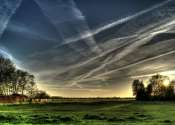It is time to draw down carbon dioxide but shut down moves to play God with the climate
The global effort to keep climate change to safe levels—ideally within 1.5°C above pre-industrial temperatures—is moving far too slowly. And even if we stopped emitting CO2 today, the long-term impacts of the gas already ...








